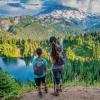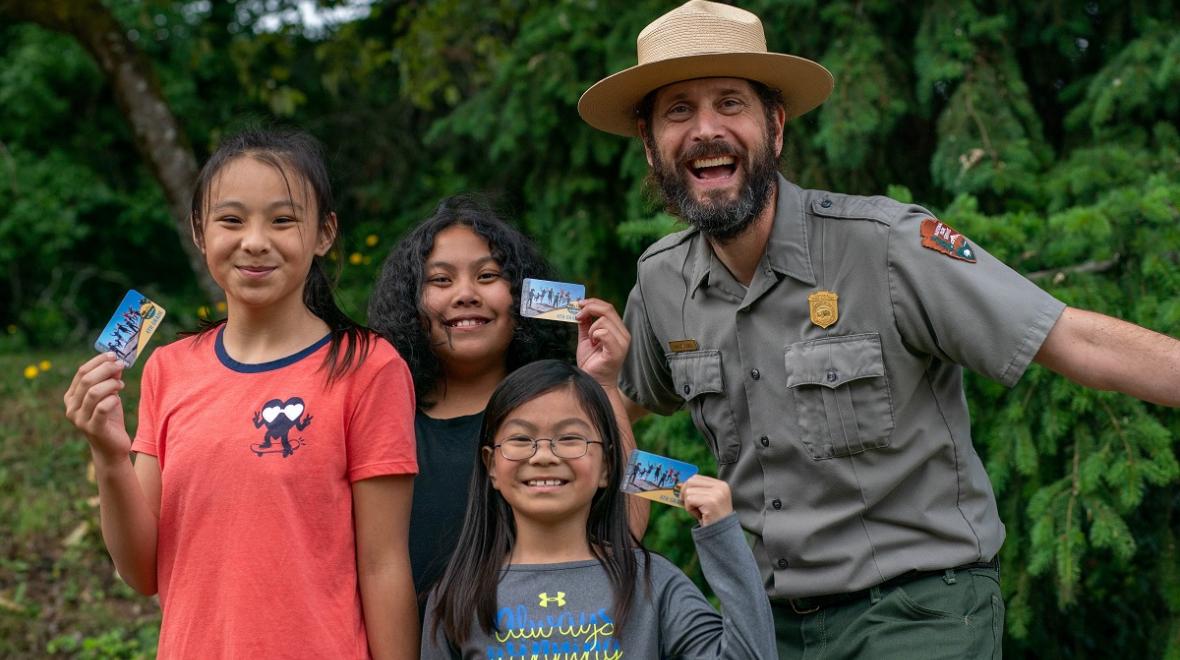
Photo:
Seattle fourth graders get their Every Kid Outdoors passes. Credit: Auriza Ugalino
I recently did something I have been looking forward to for years. I plunked my newly minted fourth-grader in front of my computer, had him answer a couple of questions about what he likes to do outside and then I hit print.
That’s how easy it was to get our year-long Every Kid Outdoors free fourth-grade national parks pass. Okay, it’s officially my son’s pass, but since most of the big national parks charge by vehicle entry, it means that our little family of three can get a free ride all year long to local gems such as Olympic National Park and Mount Rainier National Park; farther-flung treasures such as Crater Lake National Park, the Grand Canyon and Utah’s incredible Bryce, Zion and Arches — and many more.
Here’s some background on the free national parks pass, how to use it and a few surprising public-lands adventures to consider while you have your pass. Don’t have a fourth-grader right now? Bookmark this page for the future; you won’t want to miss it.
About the Every Kid Outdoors pass
Courtesy of President Barack Obama, the fourth-grade pass was born in 2015 as the Every Kid in a Park program, with a stated goal of inspiring “the next generation to discover all that America’s public lands and waters have to offer.” It was also offered as a much-needed antidote to an era when kids spend up to seven hours a day in front of a screen.
In 2019, the program was renewed under a different name — Every Kid Outdoors — but it’s essentially the same pass.
A bunch of agencies sponsor the pass, so you not only get free entry into famous national parks such as Yellowstone and Yosemite, but also to national monuments, historic sites, national seashores, national wildlife refuges and national forests. More than 2,000 sites total are included.
The pass covers entrance fees, standard amenity fees, and day-use fees for a driver and passengers in a personal vehicle at per-vehicle areas, or up to three adults at places that admit on a per-person basis (children ages 15 and younger are admitted free to public lands). Note the pass does not include things such as camping fees.
So, yes, your fourth-grader is your family’s ticket to all kinds of adventuring.
Get the pass
Getting it is simple. Go to the Every Kid Outdoors website, have your child answer questions about preferred outdoor activities, fill out a short form and you’ll get a voucher you can print out. You can then take that voucher (important: you must have the printed voucher, a mobile version won’t do) to a federal recreation site to exchange it for the Every Kid Outdoors pass card.
If you live in Seattle, one of the closest national park sites is the Klondike Gold Rush site, located in Pioneer Square. A free-admission museum with robust multimedia exhibits about the gold rush era that shaped Seattle, it’s worth a visit at any time. It even offers a Junior Ranger program where kids can fill out a booklet and earn a badge. You can also exchange the voucher for the pass at Seattle’s flagship REI store.
Note that you’ll need to show your pass to a ranger when you enter a national park or site, or leave it on the dashboard of your car. You must have the physical pass with you and you must have your fourth-grader with you (so no running off for a couple’s outdoor weekend with your kid’s pass). You can get the pass starting on Sept. 1 of the year your child enters fourth grade, and it expires on Aug. 31 of the following year.
National park trip ideas
The one problem with the pass is that it only lasts one year, and we’re all busy with, you know, school and work and stuff. So you have to plan ahead, especially for multi-day adventures that you might do over the spring and summer breaks.
You can start with the big three national parks in Washington state: Mount Rainier National Park, Olympic National Park and North Cascades National Park. And if you’re considering a big multi-day trip to iconic parks such as Yellowstone, Yosemite, Glacier or the Grand Canyon, get started planning now.
Read on for a list of lesser-known adventures to do locally with your family and your pass, organized by season.
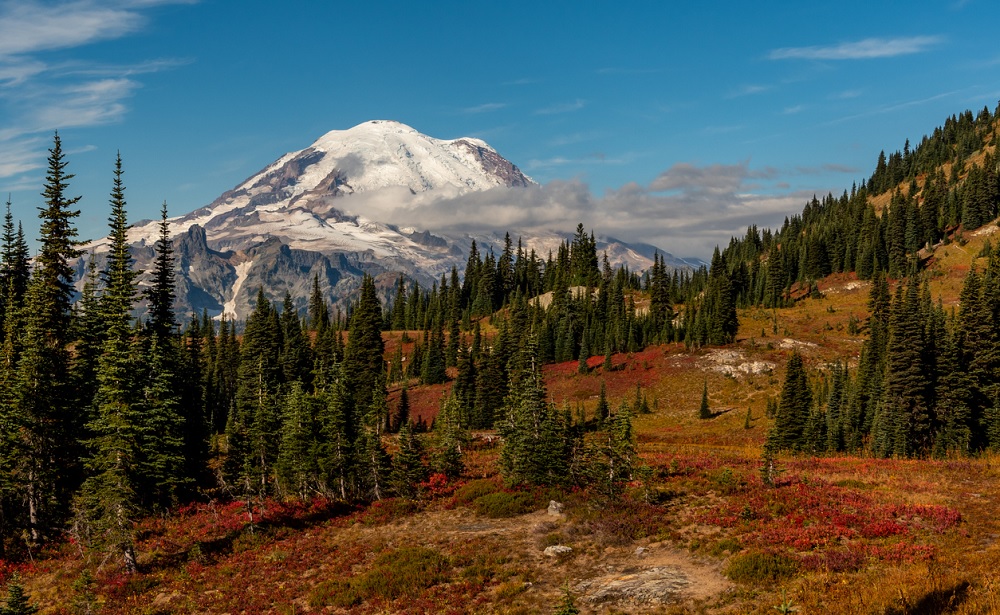
Fall adventures
- The Naches Peak Loop trail: Just outside of Mount Rainier National Park, this 3-mile loop on national forest land has stunning views the whole way. (Do the loop clockwise for the best views.)
- Staircase: The stunning, under-the-radar Staircase area of Olympic National Park is relatively close (a 1.5-hour drive from Tacoma, two hours from Seattle) and is chock-full of flat, beautiful hikes. Try the Staircase Rapids Trail.
- Billy Frank Jr. Nisqually National Wildlife Refuge, just five minutes off the highway between Tacoma and Olympia is an estuarine preserve with a cool visitor center, boardwalk trails and lots of wildlife to see.
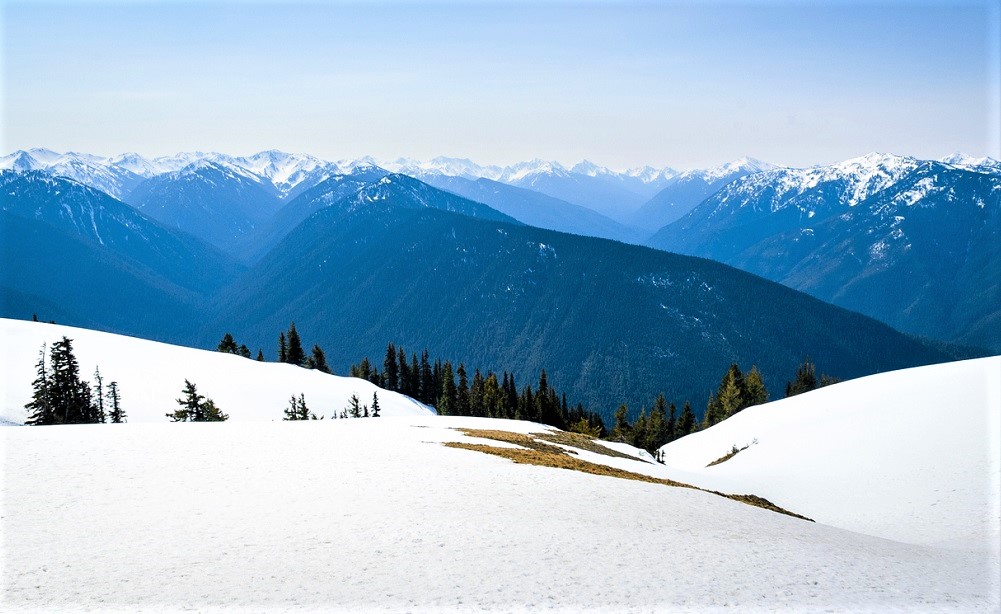
Winter fun
- Hurricane Ridge: You might not see the views if Hurricane Ridge lives up to its name, but you’ll get bragging rights that you went skiing (or tubing) in Olympic National Park, one of the nation’s few national park ski areas. Tragically, the Hurricane Ridge Day Lodge was destroyed in a fire in May 2023. Hurricane Ridge Road was closed, but reopened in the summer of 2023 in a limited capacity.
- Paradise: As soon as there’s enough snow, the Paradise area of Mount Rainier National Park opens a sledding and snow-play area. It’s open weekends and holidays, depending on snow conditions and the weather, of course.
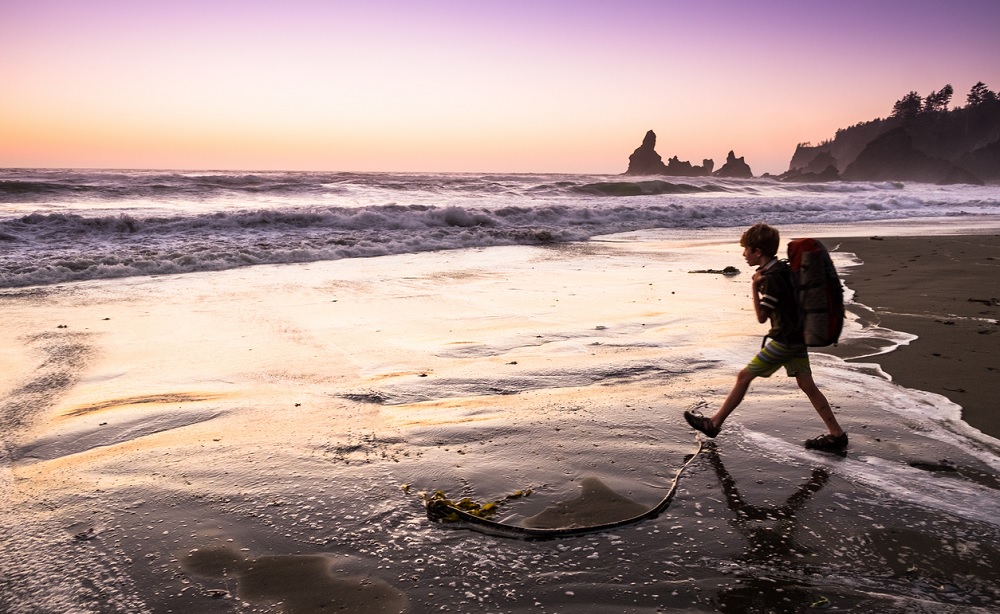
Spring outdoors
- Olympic Coast: Snow is still in the mountains, which means it’s a perfect time for a trip to the wild, gorgeously scenic Olympic Coast. Top national park sites include the Kalaloch and Ruby Beach area and the Ozette Triangle, complete with Makah petroglyphs and wild beach.
- Craters of the Moon National Monument & Preserve. This otherworldly geological site in Idaho is so moon-like that Apollo 14 astronauts trained there in 1960.
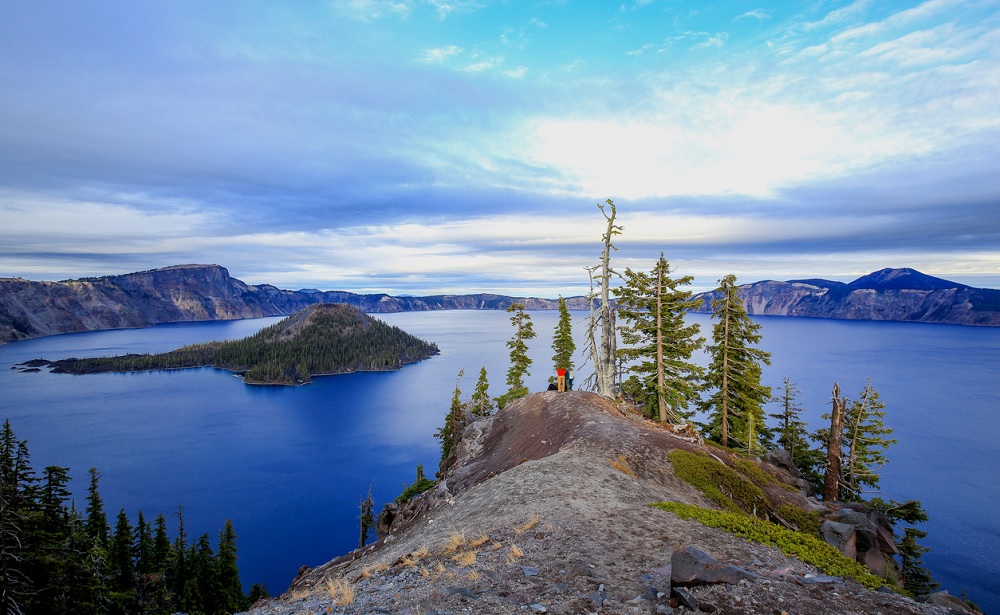
Summer magic
- Lassen Volcanic National Park: While Utah’s Big 5 canyon parks are alluring, Lassen is a closer option and a geological wonder. It’s one of the few places on earth where every type of volcano is present.
- Crater Lake National Park: That deep blue lake is the deepest in the United States. Combine this adventure with a trip to nearby Newberry National Monument.
More inspiration
The Every Kid Outdoors website is a great place to explore more ideas. Sites such as nps.gov, National Parks Traveler and recreation.gov are also fantastic resources for gathering ideas, as is a book titled “National Parks: A Kids’ Guide to America’s Parks, Monuments and Landmarks,” designed for children ages 8–12.
Here’s a list of federal recreation sites that issue passes; since you can search by state, it’s also a great starting place for eyeing some new adventures. Don’t forget to have your fourth-grader pick up their junior ranger booklet at each site, and look for other programs that will help your family learn along the way and understand what you are seeing.
Now, start planning your adventures!
Editor’s note: This article was originally published in 2019 and updated for 2023.






